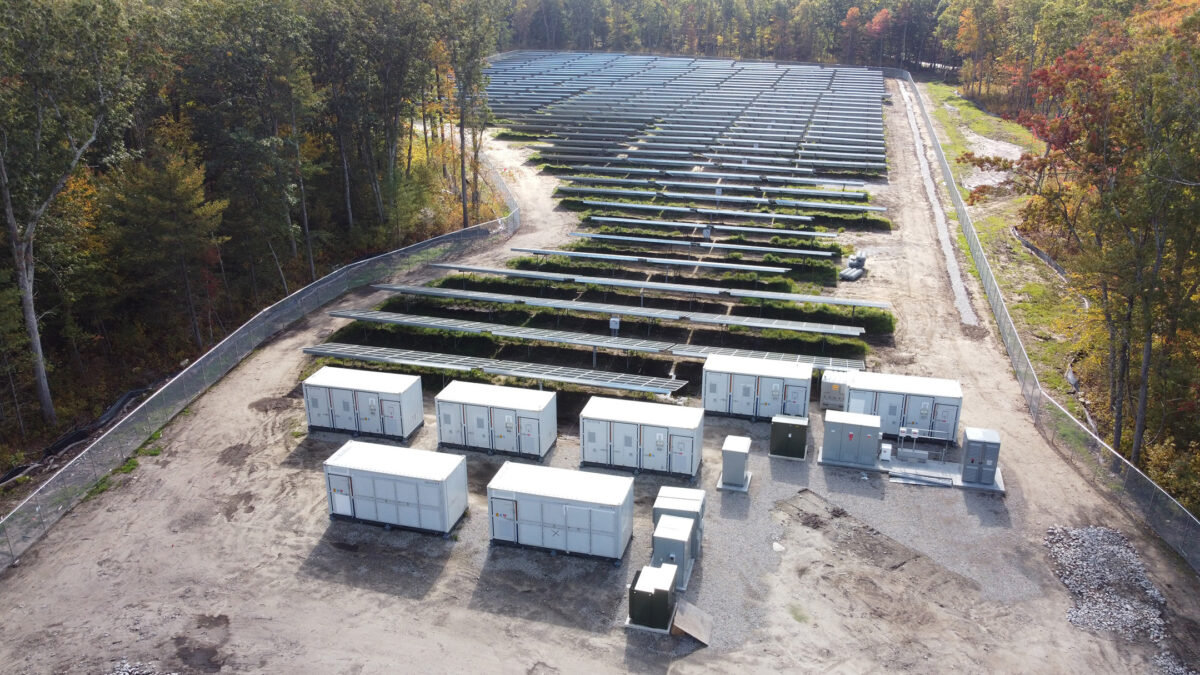The utility-scale solar energy sector is rapidly evolving, with many innovations aimed at reducing costs and increasing efficiency. One such innovation is fully integrated switchgear skids – which consist of transformers plus switchboards and SCADA – produced in a factory setting as opposed to integrating these components in the field.
By integrating these components in a factory setting, you can streamline installation processes and save tens of thousands of dollars. This is made possible by reducing costly field labor, conduit and wire, including through the skidded switchboard, in which the MVT is direct bussed. This is accomplished all while delivering the highest quality installation on projects. Castillo Engineering, Recon Corporation, EPEC & ReBoSS are achieving these benefits today by designing and building fully integrated transformer (XFMR) / switchboard (SWBD) skids in a factory rather than at solar sites.
Understanding Switchboards in Solar Projects
Low voltage switchboards are a crucial component in electrical systems, consisting of the busbar, circuit breakers, and protective relays that control, protect, and isolate electrical equipment. In solar projects, switchboards play a vital role collecting the power from inverters, and tying that power into the electrical grid. By integrating switchboards into the design phase & building them into skids in a factory before arriving on-site, you can significantly reduce costs, expedite project timelines, and improve your solar energy system’s overall performance and reliability. Avoiding over-specification in fault current ratings is critical.
Benefits of Integrating Switchboards into Solar Designs
1. Shortest Lead Times
Integrating the XFMR, SWBD, and SCADA in a factory setting is not subject to weather and other supply chain issues that often plague completing this integration at a solar construction site. For this reason, EPEC, ReBoSS and Castillo Engineering ensure the shortest construction build times in the industry for developers and EPCs like Recon Corporation. Also, this reduction in construction time due to lack of weather and labor delays means the developer can cease their construction loans faster, which increases the solar project’s profitability.
2. Highest Quality Installations
ReBoSS and EPEC are highly competent in designing & delivering fully integrated XFMR/SWBD skids custom-designed to power renewable energy projects. Over the years, EPEC has built a specialized team that ensures that the highest quality XFMR/SWBD skids can arrive on time and with superior quality assurance and quality control. Unlike when switchgear, transformer, and other components are integrated on the pads in the field, completing this integration in a controlled environment, factory setting with a highly trained team dramatically increases the quality control and it lessens the time required to complete the switchgear integration.
3. Reduced Installation & Equipment Costs
Integrating switchgear onto skids within a factory setting versus in the field yields significant cost savings. Pre-integrated systems reduce labor costs because labor hours spent in a factory to install switchgear are less than the time spent integrating the same equipment in the field. EPEC, ReBoSS and Castillo Engineering customers have reported saving between $9,000 to $20,000 per transformer/switchboard connection when using a direct bus versus the typical cable connection.
With the direct bus and skid connection, there is a significant reduction in cost because there is less conduit, wire, and labor to procure compared to the direct bus connection alternative. Close-coupling the XFMR & SWBD and integrating it on a skid significantly reduces the scope of work and time required for the highly specialized medium voltage labor to complete this switchgear integration in the field. This avoids unnecessary, extremely labor-intensive elements that would otherwise elongate schedules from weather delays, including excavation, pad forming, conduit installation, equipment setting, cable pulling, an excessive amount of high ampacity cable terminations, and equipment grounding conductor runs.
4. Maximum Tax Savings
The new Inflation Reduction Act (IRA) law allows for “manufactured” equipment with domestic content to be counted as part of the percentage required to qualify for the additional 10% “domestic content” incentive. Equipment that is built on a solar site is not considered “manufactured equipment” and therefore cannot be counted toward the domestic content percentage, which is presently at 45 percent for 2025. Integrating the switchboards onto a skid in a factory setting meets this manufactured equipment definition. As a result, solar developers can add this equipment to their tally and possibly leverage the additional IRA 10 percent tax incentives to maximize the project’s financial returns.
5. Simplified Maintenance
A well-integrated switchboard system simplifies maintenance and troubleshooting. A comprehensive design that includes switchboards from the outset makes it easier to identify and address issues, reducing downtime and maintenance costs. This ensures that the solar plant operates smoothly with minimal interruptions. An above-grade bus throat will have fewer issues than below-grade circuits over the life of the farm. Even if there is an issue down the road, it is much simpler to troubleshoot/repair.
The views and opinions expressed in this article are the author’s own, and do not necessarily reflect those held by pv magazine.
This content is protected by copyright and may not be reused. If you want to cooperate with us and would like to reuse some of our content, please contact: editors@pv-magazine.com.








By submitting this form you agree to pv magazine using your data for the purposes of publishing your comment.
Your personal data will only be disclosed or otherwise transmitted to third parties for the purposes of spam filtering or if this is necessary for technical maintenance of the website. Any other transfer to third parties will not take place unless this is justified on the basis of applicable data protection regulations or if pv magazine is legally obliged to do so.
You may revoke this consent at any time with effect for the future, in which case your personal data will be deleted immediately. Otherwise, your data will be deleted if pv magazine has processed your request or the purpose of data storage is fulfilled.
Further information on data privacy can be found in our Data Protection Policy.